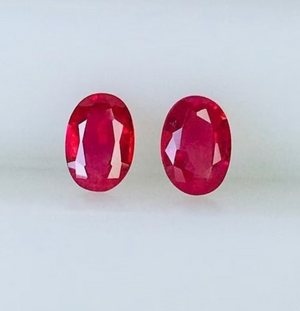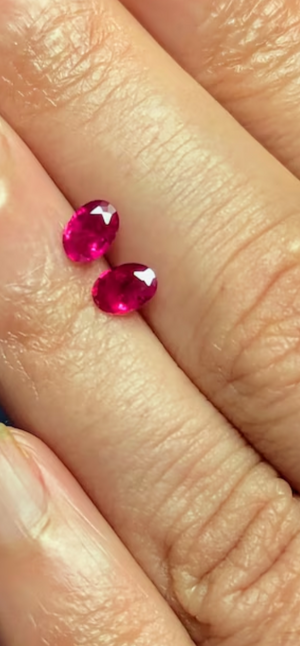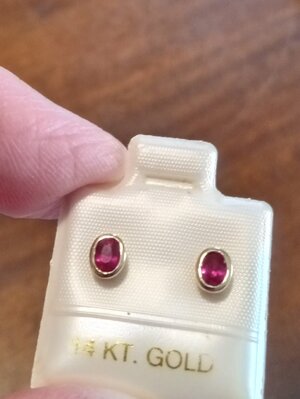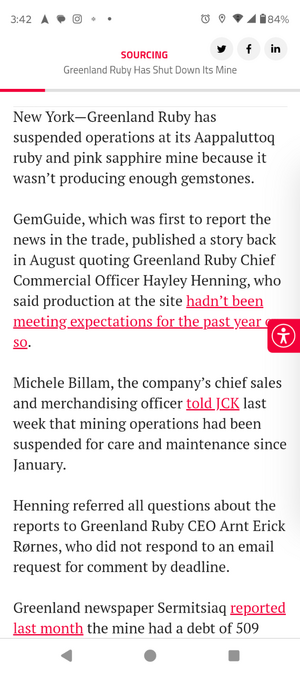Arthur Kennedy
Shiny_Rock
- Joined
- Jul 5, 2023
- Messages
- 259
Hi, gang. I was hoping to pick your brain on this small pair of heated rubies. The seller is asking $380 total. Does that sound like a pretty decent price overall? And what is your impression of the overall quality based off the pictures/video clip? The color looks nice to my eyes. But I'm a complete newbie when it comes to Rubies....
Gem type: Natural Ruby
Weight: 0.66 carat total weight of pair
Quantity: 2 pieces (1 Matched Pair)
Shape and Cutting Style: oval shape 1.412 length:width ratio, brilliant cut crown with step cut pavilion.
Measurements: 4.93 x 3.49 mm averaged between pair
(1.95 mm / 56.7% total depth)
Color: intense medium red
GIA GemSet reference
slpR 4/5
Medium-Med Light tone (4)
Intense-Vivid saturation (5)
slightly purplish Red
Clarity: GIA type-II VS
Treatment: Heated
Origin: Burma
Length x Width x Depth mm
dimensions of each stone obtained with A. D. Leverage guage:
4.92 x 3.47 x 1.89
4.93 x 3.51 x 2.00
Gem type: Natural Ruby
Weight: 0.66 carat total weight of pair
Quantity: 2 pieces (1 Matched Pair)
Shape and Cutting Style: oval shape 1.412 length:width ratio, brilliant cut crown with step cut pavilion.
Measurements: 4.93 x 3.49 mm averaged between pair
(1.95 mm / 56.7% total depth)
Color: intense medium red
GIA GemSet reference
slpR 4/5
Medium-Med Light tone (4)
Intense-Vivid saturation (5)
slightly purplish Red
Clarity: GIA type-II VS
Treatment: Heated
Origin: Burma
Length x Width x Depth mm
dimensions of each stone obtained with A. D. Leverage guage:
4.92 x 3.47 x 1.89
4.93 x 3.51 x 2.00
Attachments
Last edited:







300x240.png)